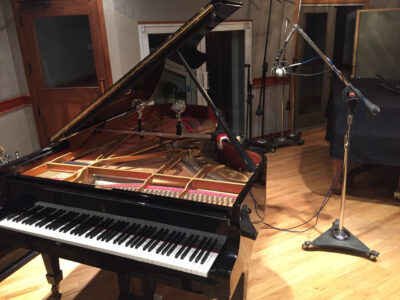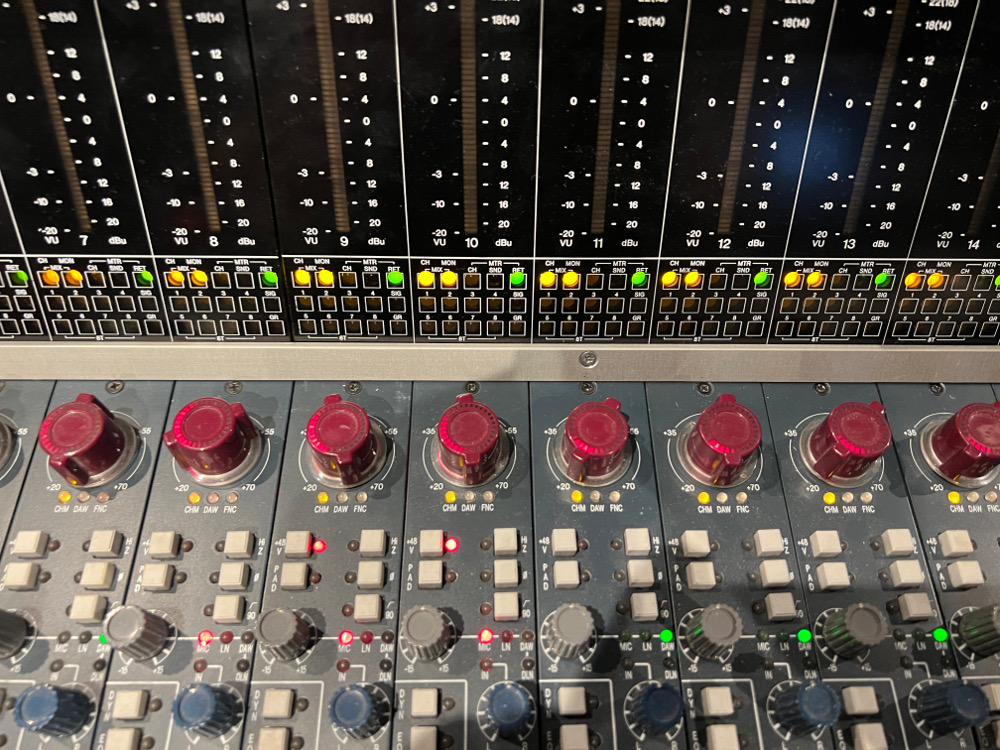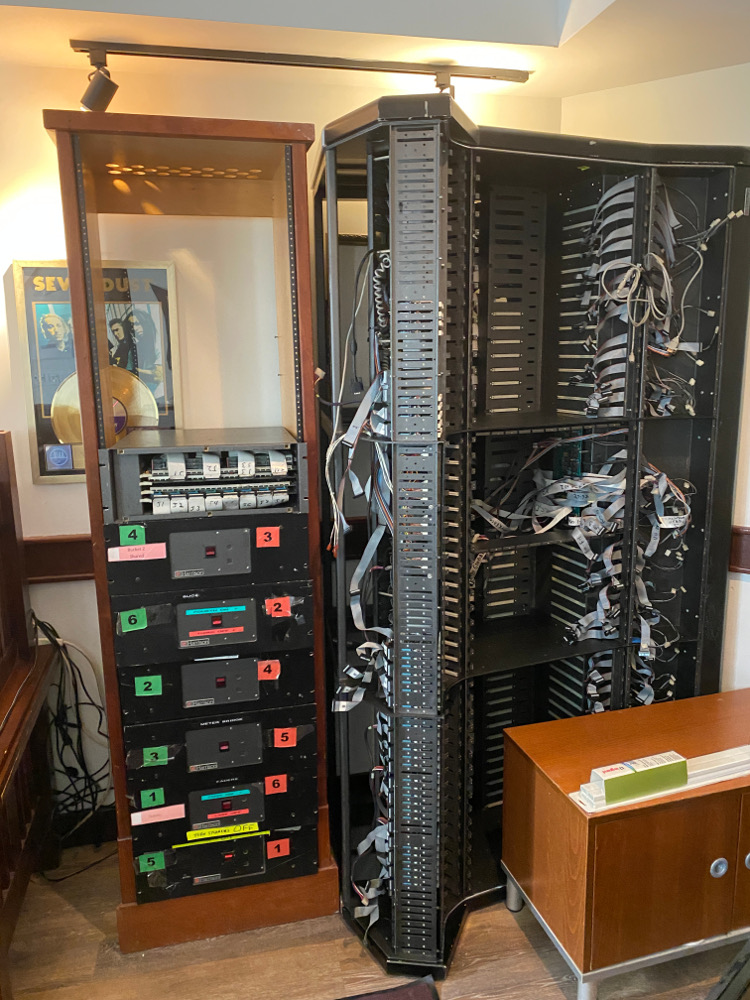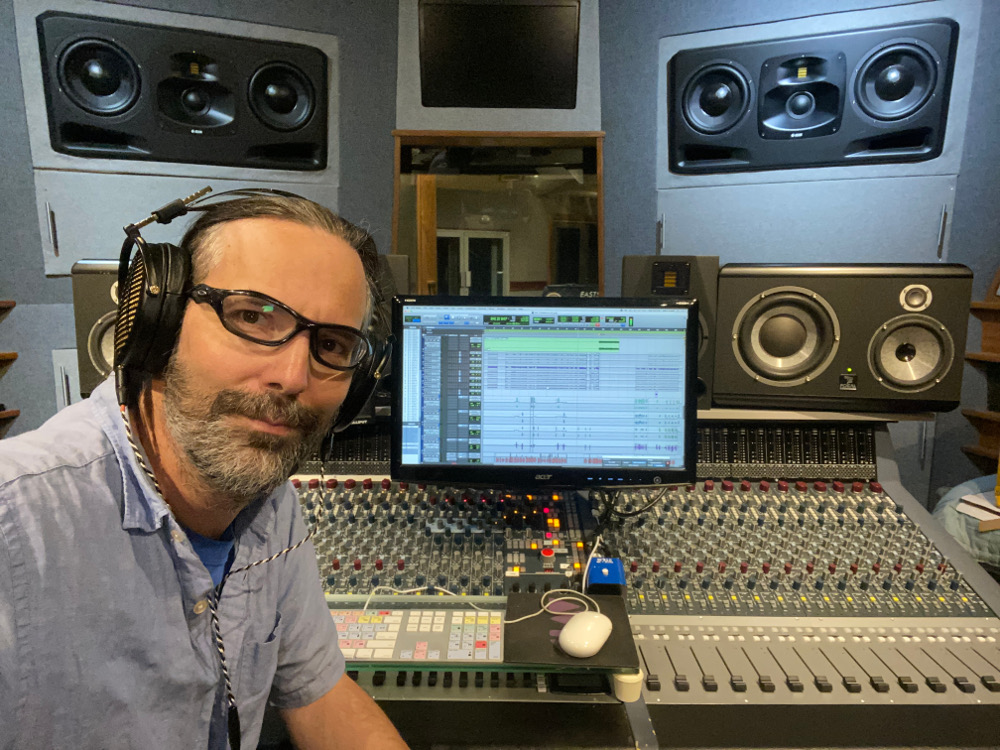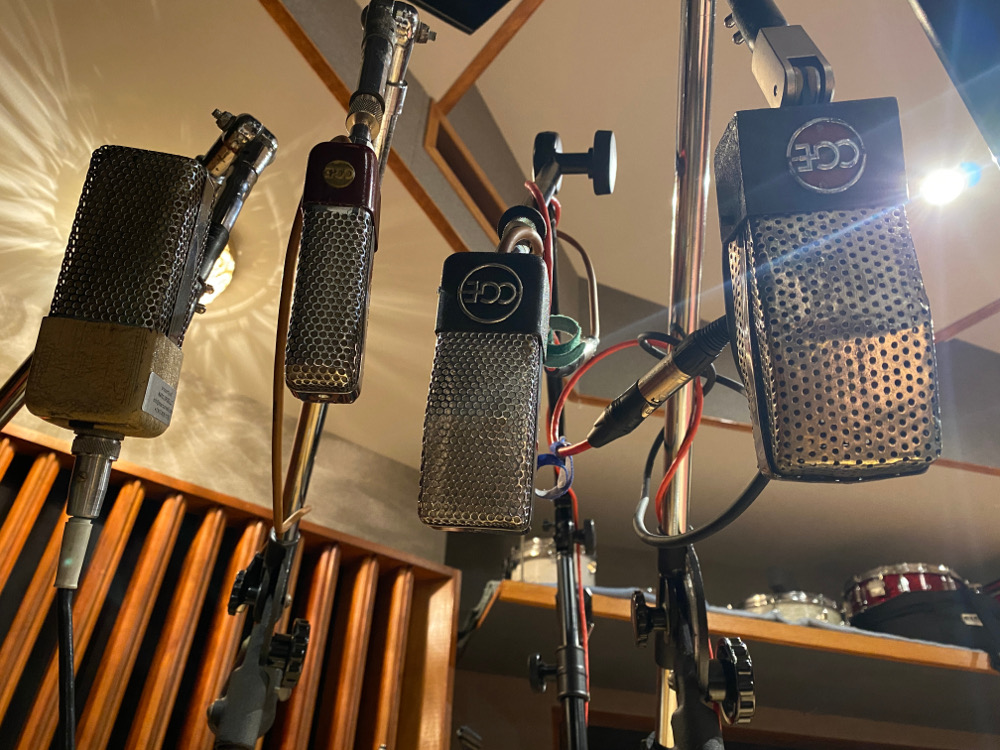Console Switch: A Neve Genesys is Next-Gen at EastSide Sound
Tough audio decisions arrive fast and furious. Close mics or overheads? Pan left or right? How fast the attack?
EastSide Sound, one of New York City’s most distinguished commercial studios, faced a deeper crossroads: Keep a classic console or procure a new desk?
‘Twasn’t easy, but after many a sleepless night EastSide rang in the new. That meant moving on from their beloved Harrison SeriesTenB (a.k.a. Series 10B), a highly advanced console introduced in 1991. An updated version of the Harrison SeriesTen, the TenB integrated Mac-based automation and an interactive video display with a fantastic-sounding analog console.
The 64-channel 10B Harrison at EastSide was a major force, helming countless tracking and mixing sessions. Harrison consoles are a passion for owner/founder Lou Holtzman, an esteemed pioneer of New York City audio. But this Big 10 was also a Big Handful, requiring continuous fixes. Eventually, upkeep on the Harrison became overwhelming.
EastSide’s Grammy-winning Chief Audio Engineer Marc Urselli (U2, Foo Fighters, Nick Cave, Lou Reed) was ready to move ahead, so he made that aforementioned tough call. Now newly ensconced in EastSide’s Studio A control room is a 64-input/32-fader Neve Genesys.
A digitally-controlled analog desk, the Genesys is a logical successor to the Harrison and then some. Outfitted with digitally-controlled 1073 preamps on every channel, extremely flexible routing, and an in-line design, the Genesys combines Neve 88R-style automation with complete DAW control. Likewise, the board’s hybrid workflow enables full console, channel strip, EQ, and dynamics automation from the DAW.
What were the mechanics behind this major move – arguably the biggest decision a studio can make? Urselli, an engineer’s engineer (as evidenced by his MixCon mix walkthrough!), has a new board breakdown in “Console Switch.”
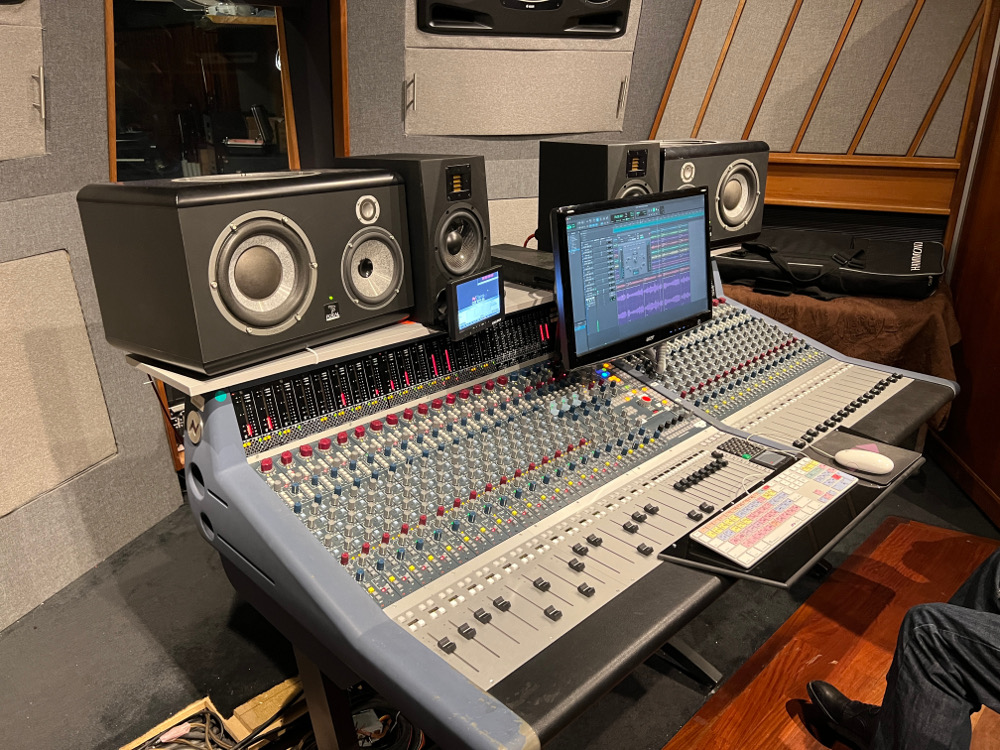
EastSide Sound is now home to a Neve Genesys. (Photo credit: Marc Urselli)
Buy it new on Sweetwater, B&H, Thomann, or Amazon. Look for deals on Reverb.
EastSide Sound Evolution – the Latest Studio Developments:
Marc Urselli: The biggest news is that EastSide turns 50 years old this year! This makes EastSide Sound the second-longest running studio in New York, after Electric Lady. Clearly this is a major achievement for any studio anywhere, but especially for one in New York City!
The other major news is that last year we acquired a new piano: It is a gorgeous 1982 black Steinway B grand piano which belonged to a Steinway artist and has been fully restored to its grandeur with a Renner action. Every piano player who’s come through loves the piano. We even had people like Fred Hersch and Matthew Ship coming back over and over to record on this piano.
The other big news is that, after a few years in which EastSide was being run by a third party, it is now back into the hands of the original owner and founder Lou Holtzman and it is managed by myself, chief audio engineer Marc Urselli. We run the studio with the love, passion and dedication of a studio committed to recording quality acoustic and electric music.
The further news is that EastSide now houses the largest collection of ribbon microphones in New York — and many other places too! – with some very rare and unique pieces in the collection.
Last but not least…EastSide Sound still distinguishes itself by having the largest number of ISO booths of ANY studio – six booths and the live room – and prides itself in being a studio that embraces analog and digital by being a fully analog studio with digital control and recall capabilities. The best of both worlds!
Console Switch — Phase One: Outgrowing a console

Before: The EastSide Harrison Series TenB sounded terrific, but its ongoing maintenance needs would prove burdensome.
We have used and loved the Harrison console for many years, and Lou has owned and worked closely with Harrison GLW on developing the Series 12 and then housing the series 10B at both locations of EastSide Sound, the old original site on Allen Street and the newer one on Forsyth Street.
The Harrison is a great console and its strengths were in its ability to offer total recall and total automation in the analog world – no converters. However, the truth is that it was a beast and it required a lot of maintenance, which wasn’t easy or cheap. At one point we were flying in a Harrison tech from the West Coast but in the last few years it was becoming harder and harder to do so and as the problems compounded with time and lack of maintenance.
Towards the end we stopped using the console, and for a while we were mixing in the box and recording through outboard preamps, which is a pity in a studio like this. Eventually we found a new owner for the Harrison in Canada and, since he’s an audio tech and electronic engineer himself, he intends to restore it to its full beauty and functionality and so we were happy to give it a new home.
Phase Two: Picking a Different Desk
It was really my doing. Lou very much loves Harrison, and I did too, but I’m the one who brings the most business to the studio and I wanted to work on a console and not just mix in the box.
I first saw the Neve Genesys Black at AES and showed it to Lou then, and when I found a decommissioned Neve Genesys “Blue” in Mexico that was being stored and not used I made a deal with the previous owner and I had it shipped to New York. (Editor’s Note: According to the AMS Neve website on the workflow difference between Genesys vs. Genesys Black, “The Genesys console uses a standalone automation package called Encore Plus. This system can be used for flying fader style automation, giving total fader control at the final mixdown stage, whereas the Genesys Black focuses purely on DAW automation.”)
Neve makes some of the best consoles in the world, that’s a fact everyone in the audio industry knows. Harrison showed me the way: the duality between analog and digital, the way to get the best from both of those worlds. I knew I wanted an analog console but I also wanted to have digital control and recall abilities and that is what the Neve Genesys offers. It is a fully analog console with no converters – just like the Harrison! – but it actually allows me to control Pro Tools and can be controlled by Pro Tools – which the Harrison could not! So you can work in full analog mode or you can use it as a Pro Tools controller, or BOTH at the same time, which is fantastic!
And on top of that there is the fact that we now have 32 Neve preamps, which for a studio that does as much tracking as we do is an incredible asset because it’s hard to beat a Neve preamp!
Phase Three: Planning the Install
Getting the Harrison out was much harder than getting the Neve in. The Harrison had a much larger footprint and it took 4-5 people to lift, tilt, push, pull, spin, and edge it to make it through the doors and make the turns of the hallways. The Neve is smaller in size so it was much easier to put it in.
Load in was actually super easy. The Genesys arrived on a truck with a lift gate and we put it on two dollies and wheeled it in. It came fully assembled, except for the feet, so with less than 10 screws and bolts we had a console in place!
The bigger difference was the wiring. The Neve Genesys is XLRs and DB25s in the back, whereas the Harrison used Tuchel connectors so we could not use any of the old wiring or old patch bay and we had to remove all of the Harrison wiring, which was a ton. That allowed us to make room for and run lots of DB25s and Mogami XLR to Bantam snakes through the floor to connect Pro Tools to the Neve and the Neve to our patch bay.
The rest of the planning was mostly cosmetic: I had to re-adapt our custom monitor arm so that we could have a floating screen above the console and in front of the engineer’s eyes – and not on the side – and I had to design a custom plexiglass keyboard and mouse tray that works with the Genesys.
Phase Four: Growing Pains
When I bought the Neve Genesys I knew that it had some problems in its previous state. I have a great relationship with the previous owner and he gave me a list of what worked and what didn’t. I am slowly addressing all the problems one by one to have a fully working console and I am doing so with the help of official AMS Neve tech Mark Leah, who’s been an invaluable help on all fronts. The hardest thing at the beginning was finding the right person for the job but Mark is the best and is has made all the difference.
The biggest thing we did was to install a new power supply which made the console work well and be stable.
Consoles like cold control rooms. The Harrison was like that too, but the Neve likes it even colder, so the air conditioning bill is probably gonna be higher in the summer and that’s hopefully going to be the only growing pain!
Phase Five: The Hip New Sound of Today
I’m loving every day with the Neve Genesys. Every day I discover some new feature I didn’t know about and the sound is just so exceptionally phat, punchy, crystal clear and powerful. I love a solid tracking session with reliable gear, preamp knobs that don’t crackle and have plenty of gain for my ribbon mics.
And I love being able to control Pro Tools with the console, keeping my hands on the faders and the encoders and being able to see my fader moves play back on Pro Tools and the console. The symbiosis is complete! You have the option to use the Neve automation or the Pro Tools automation, so this is really the next step in the hybrid mixing approach I have adopted years ago.
In today’s world it’s incredible to be able to go back and forth from a laptop to a console and have the same features and the same mix moves, but now summed through a Neve console!
I can for example prep a mix on a plane in the box, with plugins, automation, auxes etc… Then I can go to the studio and re-assign the outputs and spread it out on the Neve’s analog layer. At that point I can just keep the faders at zero to recreate the same mix with that oh-so-special analog glue, or I can use discrete channels and add analog EQ and Dynamics on the console’s analog layer and then switch to the DAW layer to do my automation. Flexibility is key and this console has it all!
Bonus Bonus
I just installed our analog Master Room II spring reverb and wired it up to the Neve Genesys. So now I can dial in a beautiful vintage spring reverb straight from the console without having to use plugins. The next step will be to wire up our old Lexicon 480 as well!
— David Weiss is an Editor for SonicScoop.com, and has been covering pro audio developments for over 20 years. He is also the co-author of the music industry’s leading textbook on synch licensing, “Music Supervision, 2nd Edition: The Complete Guide to Selecting Music for Movies, TV, Games & New Media.” Email: david@sonicscoop.com
Please note: When you buy products through links on this page, we may earn an affiliate commission.







